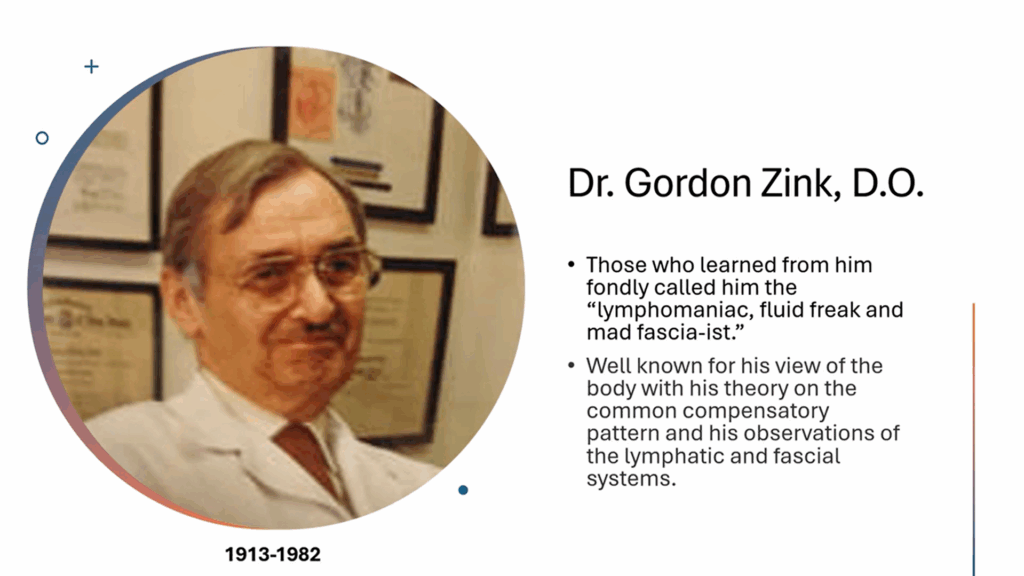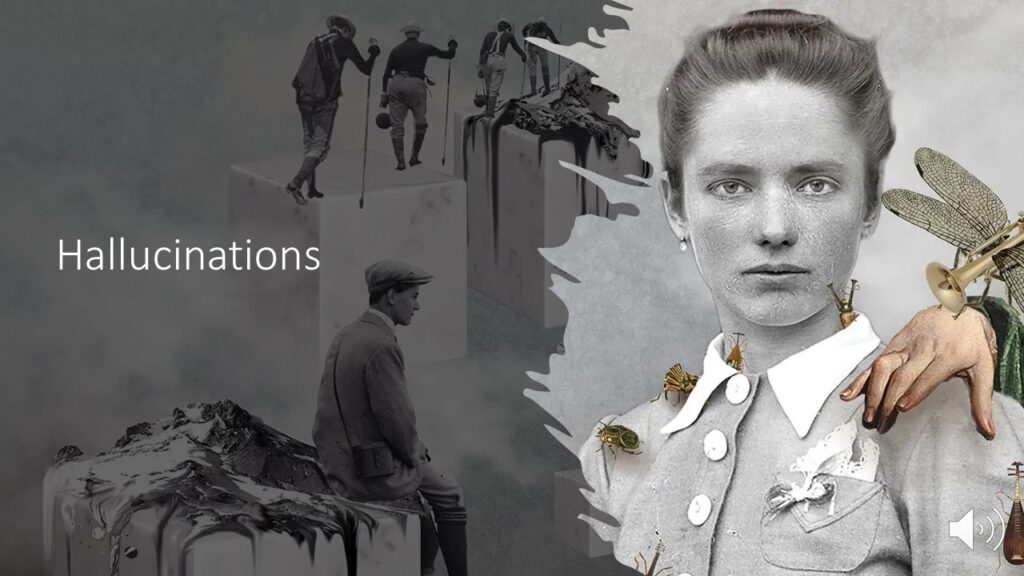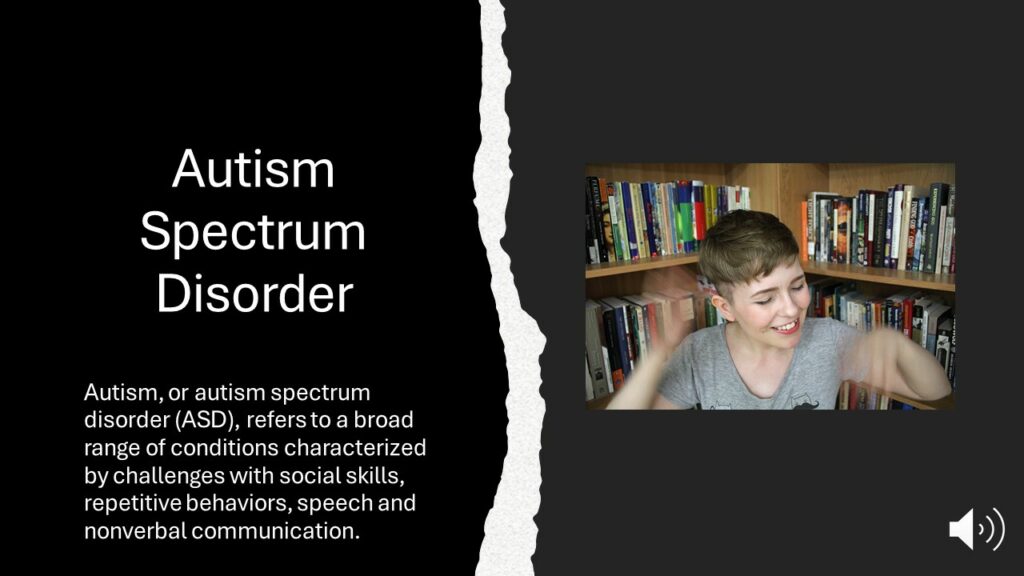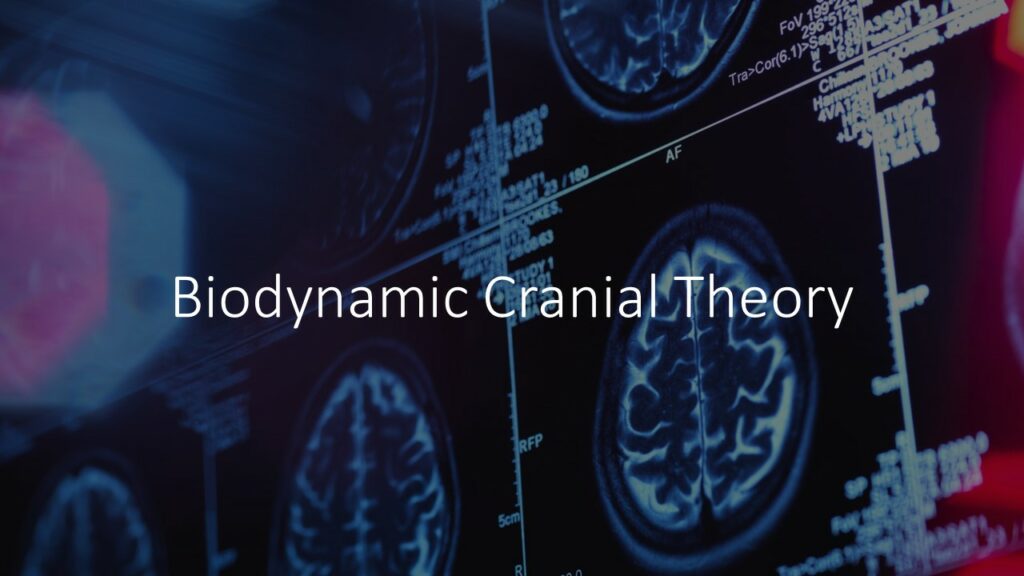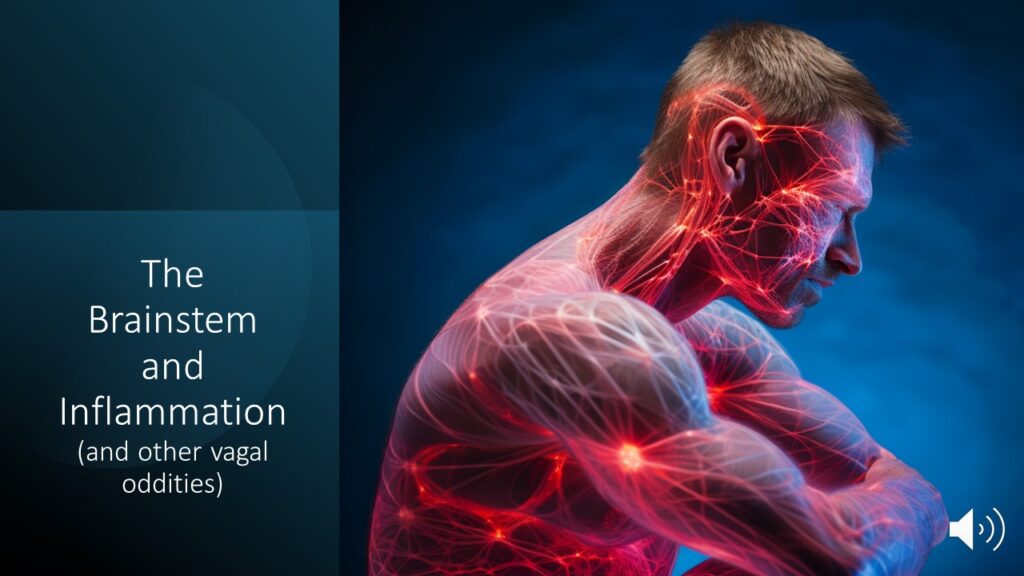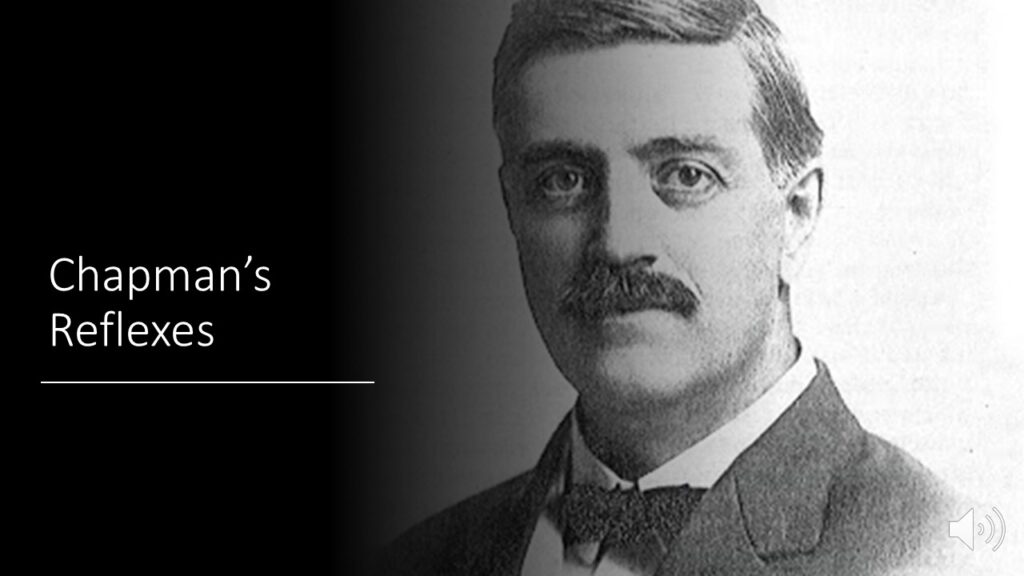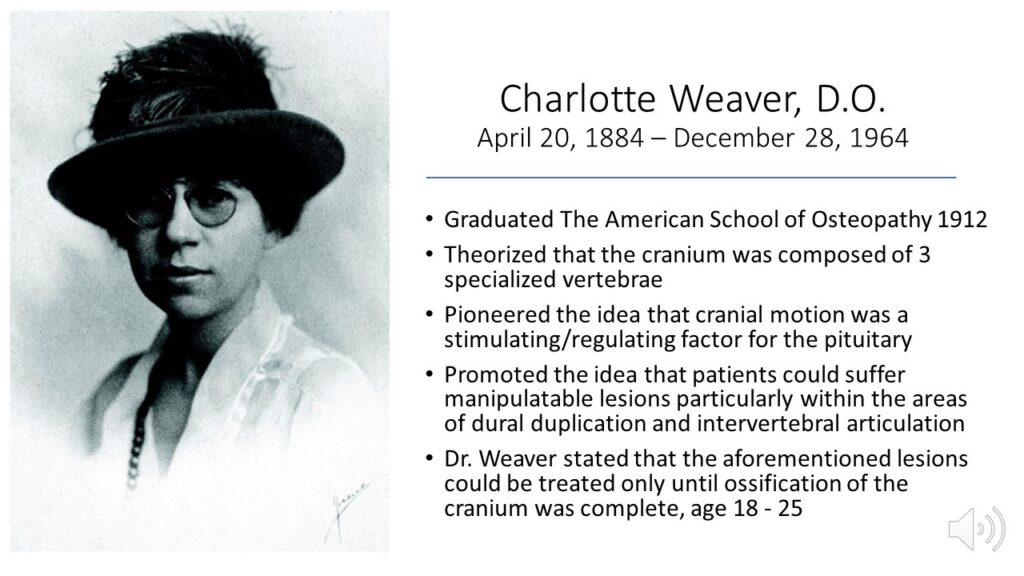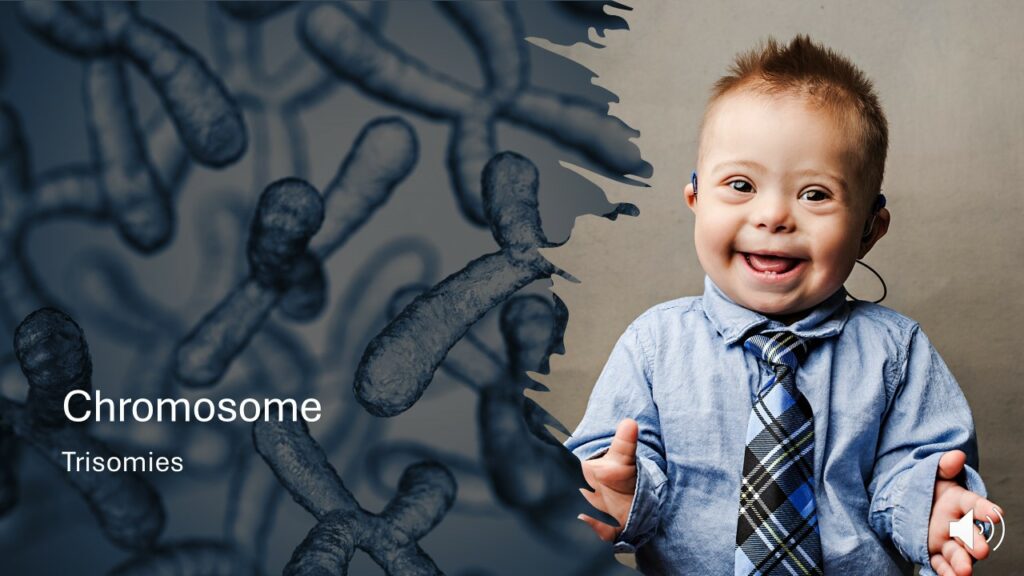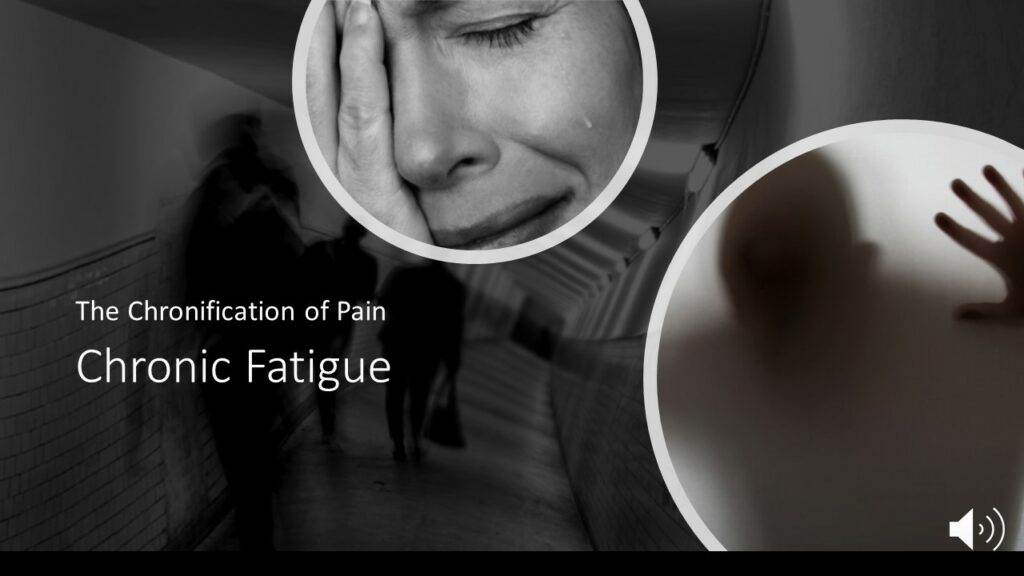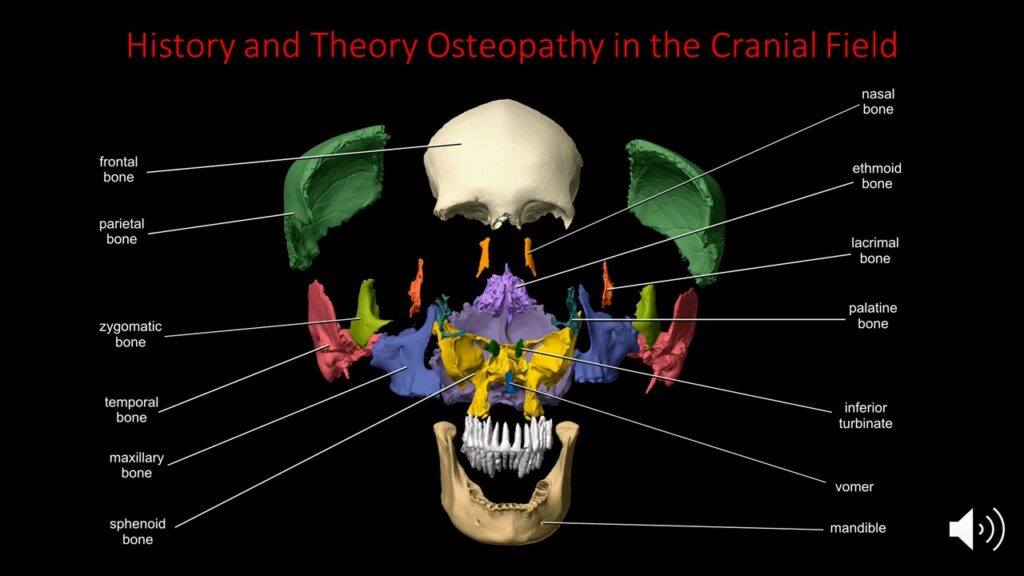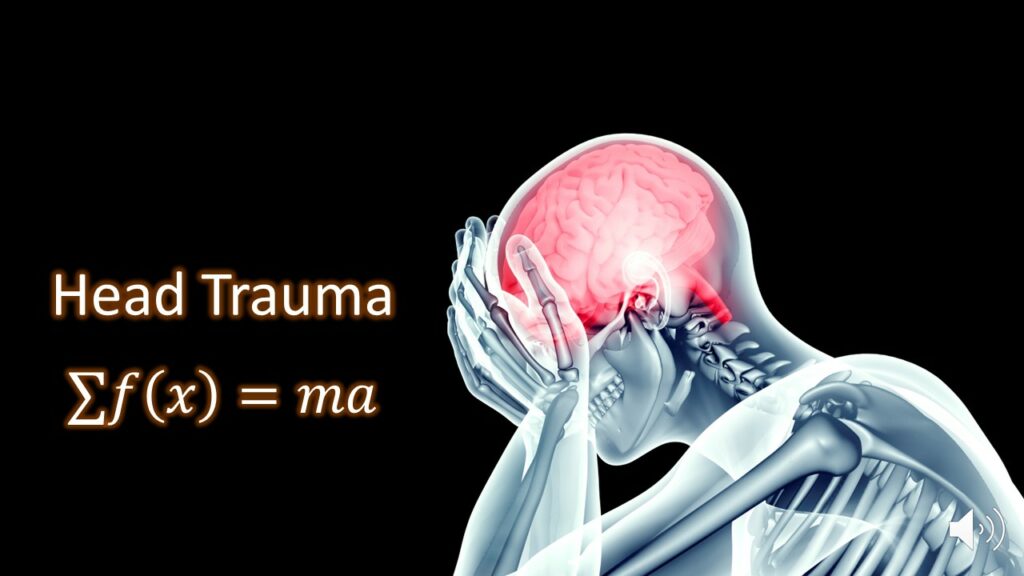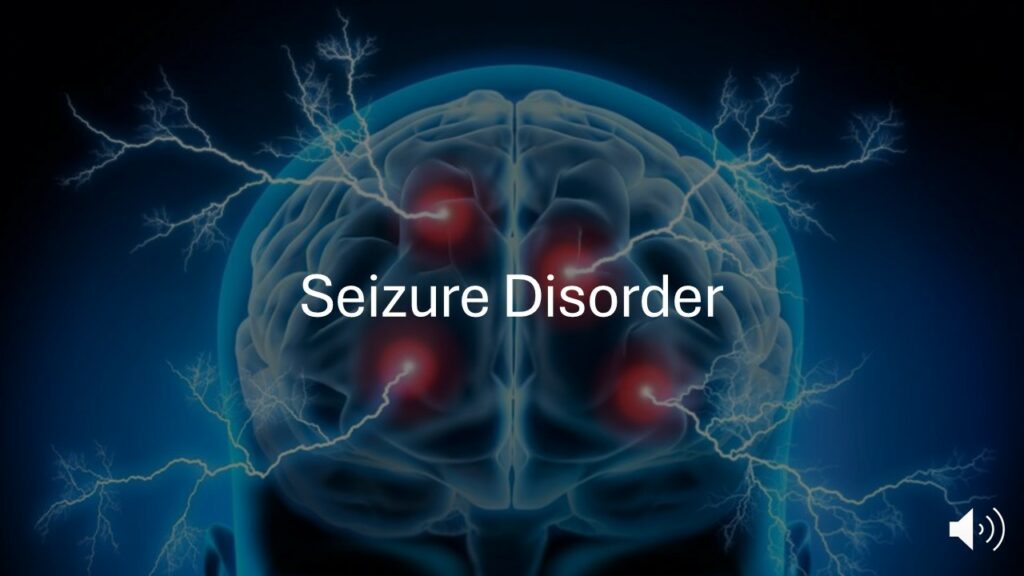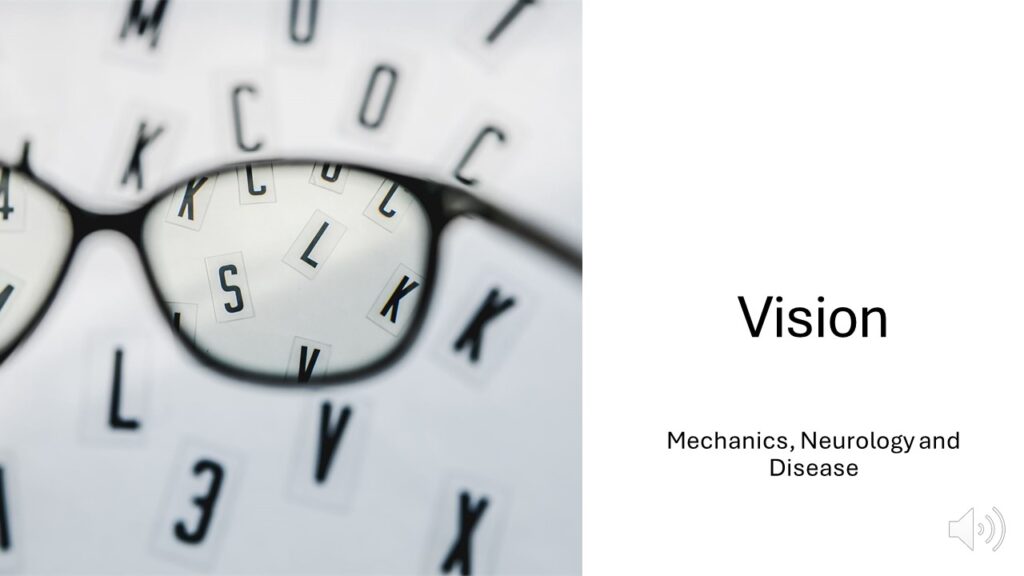
The Masters in Clinical Osteopathy program enables the osteopath to enhance and refine their clinical skills. This is accomplished by studying the deeper and avant-garde aspects of osteopathy from its classical roots to its modern-day manifestations of energy medicine. Our platform provides world renowned speakers discussing in depth analysis of traditional osteopathic concepts as well as pioneering concepts from the contemporary architects of our evolving medical science.
Historical Series: Dr. Gordon Zink, D.O. An Osteopathic Structural Examination and Functional Interpretation of the Soma, Part II
Part II continues Dr. Zink’s tour through the body comparing position, resiliency, and tenderness to palpation. Incorporated into this lecture are standard osteopathic examination techniques which are not clarified by Dr. Zink and are presented by Dr. Sanet. Lastly, a basic understanding of cranial motion and evaluation completes this lecture.
Historical Series: Dr. Gordon Zink, D.O. An Osteopathic Structural Examination and Functional Interpretation of the Soma, Part I
Dr. Zink is well known for his contributions to the myofascial interpretations of the osteopathic exam. Here is a two part series of his 1979 published article of the evaluation and comparison to the normal. Famous for his elucidation of the “Common Compensatory Pattern,” Dr. Zink explains exactly what is physiologic, what is normal compensation, and what is in his words “disparent.”
How to Make a Twinkie
Dr. Still considered the importance of proper nutrition in maintaining good health. As much of the world is consuming processed food, this lecture dives into not only what is in our food, but how it is made. When a product claims it contains “eggs,” we tend to think of an egg that we buy in the store. We don’t think of an egg broken down to its chemical constituents and then reassembled via intermediate processes with various poisons. This lecture will give a better understanding to many modern chronic maladies and a perspective of how Osteopathy can be effective.
(Neurology) Hallucinations
The term “hallucination” first came into use in the 16th century with many misperceptions as to their origin, thought to be Devine, demonic, or manifestations of insanity. In 1973 in the journal of Science and article was published “Being Sane in Insane Places.” Eight pseudo patients with no history of mental illness presented themselves at various US hospitals offering a single complaint of “hearing voices.” Seven were diagnosed as schizophrenic and one as manic-depressive psychosis and all were prescribed anti-psychotic medications. This lecture explores the many organic and emotional roots of this experience from the files of famed neurologist Dr. Oliver Sacks.
Art (The Art of Intimacy)
In this lecture Dr. Sanet shares the deepest insights of the understanding of the human psyche and its relationship to complete healing. This highlights the path that the osteopath is on not only for the well-being of patients but the well-being and forward development of the osteopath on their own personal journey. The aspects of “I, me, self, closeness & intimacy” are revealed. Why we are motivated to conform to society, to obey authority, what is the nature of this inner drive that propels us to great heights and to self-destruction, revealed.
Autism Spectrum Disorder
Autism is known as a “spectrum” disorder because there is wide variation in the type and severity of symptoms people experience. Autism spectrum disorder (ASD), also falling under the umbrella term “Global Developmental Delay,” is a neurological and developmental disorder that affects how people interact with others, communicate, learn, and behave. Although autism can be diagnosed at any age, it is described as a “developmental disorder” because symptoms generally appear in the first 2 years of life.
Autoimmune Disease
The immune system’s job is to protect the body from infection. It protects our inside world from the outside world. It recognizes ‘invaders’ or foreign, doesn’t belong here, such as bacteria, viruses and fungi and abnormal cells like cancer cells. It creates an immune response and helps the body fight the invasion. So why does it turn against us in autoimmune disease?
Biodynamic Cranial Theory
The biodynamic theory of Osteopathy in the Cranial Field was an amalgamation of Drs. Blechschmidt and Gasser’s work on the Biokinetics of Human Differentiation with Dr. Sutherland’s cranial theory. Biokinetics stresses not only that a genetic code was being followed but that the code was amenable to forces placed upon the developing structures. It is the initiating embryological development that gives rise to the Primary Respiratory Mechanism (PRM) and thus Biodynamic cranial theory.
Biotensegrity
Brainstem (The Brainstem and other Vagal Oddities)
The brainstem has long been known to monitor heart rate, breathing and aspects of taste. Research has discovered that in response to injury, nerve cells in the brainstem sense inflammatory molecules and can upregulate or downregulate the same molecules to prevent infections from damaging healthy tissues. In researchers’ assays for chemosensory receptors in tissues throughout the body, a cell type that kept popping up was a relatively rare, largely unstudied one called a tuft cell. Scientists now theorize that a major role of these receptors is to monitor the molecules in our body, “tasting” and “smelling” them for any sign that they might be from a pathogen.
Breastfeeding & Newborns
Cancer, Hospice, and Palliation
Life-altering cancer, hospice, and palliation are unique challenges for the osteopath. Here we will unravel the plethora of cancer treatments currently available and the staging of cancer and how this will impact treatment. The environments of hospice and palliation as well as curative and health supportive applications highlighted. What osteopathic modalities are most useful and most easily tolerated for the cancer patient are delineated.
Cephalgia
The number two statistical complaint around the globe would be cephalgia coupled with neck pain. Here in specific detail are analyzed migraine, cluster, and tension headaches. Classic signs and symptoms are discussed and well as danger signs of life-threatening cephalgia. Differences between trigger point, tender point, and Chapman’s reflexes and their relationship with cephalgia at annotated for which the osteopath has many tools at their disposal.
Chapman’s Reflexes
Frank Chapman, D.O. found and mapped out non-neural subcutaneous tissue which he described as a “gangliform contraction.” His maps are used in osteopathy both for diagnoses and treatment of a variety visceral pathologies. Also noted are the concurrent findings of Paul Schilder M.D. who made a similar observation however working not in concert with Dr. Chapman. The pathophysiology is contrasted with other proposed spinal reflex pathways giving rise to tender points and trigger points. In this module a unique treatment sequence is also offered.
Charlotte Weaver, D.O.
Very little was known about Dr. Charlotte Weaver, D.O. She graduated The American School of Osteopathy in 1912 and she developed her own unique theories about what would later be termed “Osteopathy in the Cranial Field.” She viewed the cranium as an extension of spinal segments and theorized that the cranium was composed of 3 specialized vertebrae. Dr. Weaver pioneered the idea that cranial motion was a stimulating/regulating factor for the pituitary or “master” gland.
Chromosome Trisomies
Down syndrome, trisomy 21, results 1 in 700 births (USA) and is the most common chromosomal condition diagnosed. Edward syndrome, 1 in 2500 pregnancies, and Patau syndrome, 1 in 10,000 births are trisomies that are second and third most common of the trisomies. Mechanisms are presented as well as common associated pathologies and comorbidities. Much of the symptomatology of trisomies can be addressed with various osteopathic modalities.
Chronic Fatigue & the Chronification of Pain
Over time pain mutates the mental as well as the physical health. Chronic fatigue has been observed in the medical community for centuries and assigned multiple theoretical etiologies. An estimated 20% of patients present with Chronic fatigue as a comorbidity. This module uncovers how pain evolves over time from the acute phase to the chronic phase and how this morphs the mind and body. The key to osteopathic treatment lies in understanding the ubiquitous nature of pain and its evolution over time.
Cranial Theory
This module explores the four most popular theories for Osteopathy in the Cranial Field. The underlying anatomical and physiologic as well as histologic foundations of bony theory, pressure stat hydrolytic theory, fascial theory, and biodynamic theory are fully elucidated. Dr. Sutherland initially explained cranial phenomena as a bony model. Dr. John Upledger and Dr. Robert Fulford brought to light the pressure stat and fascial models. Finally, the biodynamic model emerged with Dr. Sutherland’s application of Drs. Blechschmidt and Gasser’s biokinetic model.
Craniosynostosis
Synostosis is the fusion of adjacent bones. In the cranial vault this is an abnormal process. This module delves into the various permutations of fusion of different sutures resulting in different phenotypes. Synostosis is compared and contrasted with plagiocephaly which is not fusion but restriction resulting in an abnormal phenotype. The application of cranial osteopathy may offer restoration in the case of plagiocephaly and symptomalogically restorative in synostosis and at the very least anodyne.
Energy & Osteopathy
Here I will share the anecdotal experiences of energy movement from the many masters in Osteopathy as well as my own personal experiences and experiments. Dr. Robert Fulford (noted in Dr. Andrew Weil’s best-selling book Spontaneous Healing as a great healer, Dr. Randolph Stone (founder of Polarity Therapy), my own investigations into the relationship of resonating animal sounds, breath, and Qi Gung as totipotential healing energy available to the osteopath and the patient alike.
Evolutions End & Reversal Theory
Delve into the theories of Joseph Chilton Pearce and Michael J. Apter, PhD on how our brain develops, frequencies that our brain responds to as well as frequencies emitted by our brain. Is it possible to communicate the feeling of an experience as opposed to words to describe the experience? Learn the different states of the telic versus paratelic personality traits and where we fall in the eight metamotivational states.
Fascial Distortion Model
Dr. Stephen Typaldos, D.O. proposed the Fascial Distortion Model. Dr. Typaldos based his theory on the concept that all musculoskeletal complaints can be traced back to three-dimensional deformations or distortions of the fasciae. His diagnosis uses patient language, gestures and symptomatology. The concept is that these distortions can be undone through direct application of a variety of manual techniques. His techniques and application are presented in detail.
Fibromyalgia
Fibromyalgia was coined in 1981 but has been observed throughout the centuries under many other pseudonyms. Lacking objective findings, even today, it is estimated to affect 2-8% of the population and is stratified across race and ethnicity. This module will educate the osteopath on the ubiquitous nature of complaints and how best to tackle them with a holistic approach for both the physical and emotional manifestations. Fibromyalgia, while underreported, is a comorbidity with an exceeding number of musculoskeletal complaints and emotional maladies.
Functional Technique
Dr. William L. Johnston, D.O. developed functional technique based on a unique model of dysfunction that he called the “motor united” or 3-segment complex. He details his theory with new terms that he introduces such as “mirroring” and “linkage.” His unique theory links visceral dysfunction to musculoskeletal dysfunction. Dr. Johnston combines a complicated theory with an easy to understand application. This patient passive treatment is clearly defined and explained in this module.
Habit (The Power of Habit)
In 1992 Eugene Pauly suffered a viral encephalitis that destroyed a 5 cm mass of his medial temporal lobe resulting in anterograde amnesia and the inability to form new memories and yet he was able to find his way home. This led to a groundbreaking discovery of a heretofore unknown operation of our brain in the formation of habits. Understanding this function of the brain will streamline the osteopathic evaluation and provide new tools for rehabilitating patients.
Head Trauma
This module explores the nature of cranial trauma. Factors include forces applied, point of application, dispersal of force, and tissues affected from residual force. It is possible to have a minor force create extensive damage and at the same time survive a gunshot wound with nearly minimal damage, how is this possible? In this module the dynamics of physics and specific anatomy are used to explain the aforementioned phenomena.
Holographic Universe
Karl Pribram, MD and David Bohm, PhD., present the advanced quantum ideas of how our energetic world interacts with our physical world. How does our brain assemble information to recognize someone we haven’t see in in 20 years? How can smells evoke memories? How do we translate motor skills from one task to another? Premonitions are explained as “tuning in” to a potential implicate order of one of many potential realities.
Ligamentous Articular Strain: Treatment of the Eight Diaphragms
Ligamentous Articular Strain is a combination of soft tissue techniques that were applied by Andrew Taylor Still and handed down historically from Dr. William Sutherland, D.O via the Dallas Osteopathic Study Group. The body contains eight diaphragms which according to Dr. Rollin Becker, D.O. “act as baffles which modulate the flow of fluid throughout the body. Treatment in this module is to restore free flow of the “tide” with regard to cerebrospinal fluid and interstitial fluids.
Ligamentous Articular Strain: Treatment of the Bowstring Areas
Ligamentous Articular Strain is a combination of soft tissue techniques that were applied by Andrew Taylor Still and handed down historically from Dr. William Sutherland, D.O via the Dallas Osteopathic Study Group. Rollin Becker, D.O. said that “you cannot just treat backs, you must also treat fronts or the treatment of the backs won’t last.” The bowstring relates to the anterior, longitudinal interconnected fasciae that help maintain the anterior-posterior balance of the body and also connects the eight diaphragms. The treatment protocol is detailed in this module.
Lymph Composition, Mechanics & Anatomy
This module explores the composition, anatomy and mechanics of lymphatic formation, purpose and flow. The chemical processes are revealed from the micro particle formation, cellular apparatus, and overview of the gross anatomical function. The development of lymphatic techniques are grounded from Frederic Millard, D.O. and its many applications for the infective, edematous, cardio and or pulmonary compromised patient.
Lymphatic Disorders
What happens when the lymphatic system goes awry? Lymphangioleiomyomatosis affects women of child-bearing age, what are the implications? How can the osteopath assist the body to heal with lymphadenopathy? Lymphangiectasia, lymphangioma, and Castleman Disease have varied global effects on the body transport system for most of the body fluids. How does a nematode cause elephantiasis? The lymphatic system is the foundation of our immune system, we explore how to aid and assist in healing.

Myofascial Release: History of Fascia
Fascia comprises 15% of total body weight and 25% of total body water. Its triple helix collagen structure gives fascia a tremendous tensile strength. It is the tensile strength that is responsible for the fascia as a necessary component in the biotensegrity model. Gordon Zink, D.O. presented a model for fascial distortion as part of normal compensation and therefore determinative in abnormal compensation to trauma. Dr. Zink’s theories are coupled with other osteopathic ideas of fascial compensation with regard to emotional as well as physical trauma.

(Neurology) The Man Who Mistook His Wife for a Hat
Right-brain injury has received far less attention that the deficits of left-brain injury in the neurological world. Here we observe the qualities of Dr. Oliver Sacks vast case files of right brain injury. He categorizes these are “losses, excesses, transports, and the world of the simple.” With each cases we dive into the world of the strange pehnomena when the lesions inhabit the right and sometimes bilateral brain.
Palpation, Affect and Rapid Biomechanical Exam
This module is a compendium of testing and observation that will lead to a rapid conclusion. Too often osteopaths have been educated with a cumbersome and near impossible task of applying too many tests in too little time. Dr. Steven Sanet, D.O. takes the osteopath through a manner of quick history taking techniques coupled with decisive manual tests to go from the global picture to specificity without wasting precious time.
Primitive Reflexes: Echoes of Embryology and the Osteopathic Connection
Primitive reflexes (PR) develop in utero for survival outside the womb. Eventually subsumed into higher cortical activity and then to return in various disease states according to Jacksonian dissolution. PR are commonly observed and can be elicited during osteopathic treatment. This module is an exposition on the development and meaning of primitive reflexes and their inhibition or dysinhibition and the implications for release of physical and emotional trauma.
Psychological Disorders
The field of mental health goes hand in hand with Dr. Still’s osteopathic philosophy of “the body is a unit.” This module digests the massive Diagnostic and Statistical Manual of Mental Disorders DSM-5 which is the latest edition recognized worldwide. Highlights are given to facilitate the notation of psychological progress concomitant and omnipresent with physical disease.
Pulmonary Diseases: The Role of Osteopathy
Recognition and treatment of pulmonary disease with osteopathy is crucial as a stand-alone treatment or as adjunctive to standard medical treatment. The pathophysiology of many common and uncommon pulmonary diseases are illuminated so as to facilitate creation of beneficial osteopathic modalities. Common diseases include chronic obstructive pulmonary disease, emphysema, asthma, and bronchitis; less common are lung deposition diseases such as asbestosis, amyloidosis, and sarcoidosis.
Reason in Madness
Our views on Aristotelian logic are challenged by Alfred Korzybski’s (engineer, mathematician, philosopher) seminole work “Science and Sanity.” Information by abstraction is clearly delineated as well as the faults in our logic. Molly Niv, MD and other prominent physicians and philosophers will take us on a journey of the deep understandings of human emotion and motivation. The deep spiritual attractions and aversions that underlie mental illness are highlighted.
Seizure Disorder
Seizure disorder is often very amenable to osteopathic treatment. This module provides a thorough understanding of the mechanisms and varieties of seizure disorder. The seizure patient should be approached with a comprehensive treatment often with the Osteopath as adjunctive after the patient has been on neuroleptic medication. Successful remission of seizure activity may lead to medical cessation or decrease in medication.
Sex Chromosome Variants
Klinefelter syndrome (XXY) and Turner syndrome (XO) are two more commonly known sex chromosome deviations. This module details the greater variations of those with missing chromosomes such as Tuners, variations on Turners, and those with extra chromosomes, 45, 46, 47, 48XXXY, 49XXXXY chromosome anomalies. The morphologies will be highlighted as well as signs and symptoms. The illusion of the true hermaphrodite, possessing both functioning male and female characteristics will be presented and clarified.
Still Technique
Richard Van Buskirk, D.O. is credited with rediscovering this technique from scant references from Dr. Still’s early graduates. Dr. Van Buskirk describes it as “indirect then direct technique” This technique is specific to a targeted tissue or articulation. The theory and examples of application will provide an easy understanding for the osteopath to absorb this into their current armamentarium. As a patient passive technique this is very suitable to the elderly or disoriented patient.
The Other Brain
R. Douglas Fields, PhD. turns upside down the previous understanding of how the brain in wired. The old idea of neuron-to-neuron connection and glial cell support as the ironclad backbone of how we “think” is now just one part of a much larger picture. Glial cells, the “other brain” as it turns out are intimately involved in ratcheting up or down neural channels. The brain, long thought to be absent totipotentiality, has plasticity and the ability for new neurons after injury. The mystery of why, after injury, peripheral axons can reconnect, but CNS axons cannot has been solved.
The Tide
Dr. Sutherland and Dr. Becker lectured on the “potency” of the tide of the cerebrospinal fluid and its efficacy in the global health of the individual. Differences were ascribed to the fast versus slow tide. What is the slow tide and what is the engine behind it? These theories and others are the jewels of this module. It will also be presented that many pillars of the osteopathic cranial foundation in fact disagreed with many key observations, thus reinforcing our individuality as an interpretive artist with a scientific underpinning.
Vagus Nerve and Polyvagal Theory
Dr. Stephen W. Porges, PhD had developed the traditional thought of the vagus nerve as merely being parasympathetic in nature to being an afferent system much more deeply involved in our survival. This module traces the vagus nerve from its unmyelinated components to its myelinated components with vastly different purposes. Dr. Porges develops the idea of neuroception and interoception and links this idea with social integration, all of which the vagus is the keystone apparatus.
Visceral Manipulation
Manipulation of the viscera is based on mobility (gross motion of the viscera) anatomically and motility (inherent organic motion) energetically. A large variety of somatic dysfunction may be treated through the viscerosomatic reflex in reverse as well as improvement of the visceral function directly. This module will uncover the anatomic relationships, positions, and nerve related pathways that underlie these theories. Organic response to necrotic signals and abnormal proprioception are the centerpieces to be understood.
Vision, Mechanics, Neurology and Disease
Osteopathy is a vital component of many ocular conditions and treatments. Myopia, Hyperopia, Strabismus, Amblyopia and Macular degeneration are just some of the ocular diseases that Dr. Sanet has successfully treated or ameliorated over many years of practice. In this module we will examine where we are able to impact many conditions through various models including fluid dynamics, muscular operation and a deep understanding of how vision is aggregated from retinal impact to brain assembly.
Why We Snap
Road rage is rampant today. When someone cuts in front of our car while driving, we become enraged; when someone is running in front of us on the footpath, generally we are not enraged, why? R. Douglas Fields, PhD shows us how we are embryologically and evolutionarily wired to be “triggered.” Dr. Fields makes clear the neural circuits involved in these triggers as well as the different triggers that exist and the relevance in history to present time.

Please send us your personal details and academic information to complete the enrollment process.

